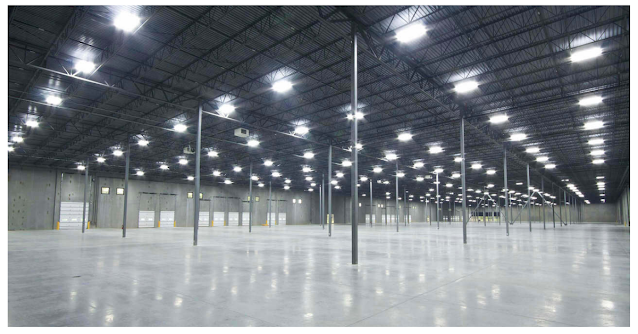The requisite light intensity measurement will vary depending on the form and degree of play of your particular application. The amount of light that strikes a surface is referred to as illuminance, also known as incident light or brightness. The only way to be certain that enough light levels are present is to take measurements. Illuminance is a metric measured at a surface and is determined by the density of lumens per unit area. Foot candles and lux are the most common illuminance measurements.
How Is Illuminance Measured?

Both the horizontal and vertical planes should be determined when measuring light. The sum of light that falls on a horizontal surface, such as a tabletop, is known as the horizontal illuminance calculation. The sum of light that falls on a vertical surface, such as a wall, is known as the vertical illuminance calculation. In your lighting design, it's important to remember both vertical and horizontal illuminances.
What Happens If Vertical Illuminance Isn't Considered as a Design?
Minimal shadowing is ensured by measuring illuminance to obtain acceptable performance. The sophistication of the visual tasks being performed for the lighting setup determines the illuminance values for applications and lighting solutions. For example, if a tennis court is only illuminated from one side or end, it can have enough horizontal footcandles but not enough vertical footcandles. Any human, piece of equipment, or even a tennis ball will cast a shadow, obstructing one's ability to play the game. Evening out the light and minimizing shadowing can be achieved by measuring both horizontal and vertical illuminances.
Can Symmetrical Lighting Guarantee for the Sufficient Light Levels?
Although no one may design lighting for a sports court or a facility from just one side, Access Fixtures' lighting experts are often asked to do so. Many people believe that if a sports court, road, stadium, or other wide outdoor area is lit with an asymmetrical lighting scheme, the vertical illuminance would be adequate and balanced. Regrettably, this is not always the case.
For example, if a balanced and symmetrical lighting design results in light trespass near the property line, the offending fixtures can need to be diverted, shielded, or replaced with lower-wattage units. The fixtures on the other side of the court, on the other hand, might be fine as is.
Until a project is designed, photometric studies, also known as photometric analyses, are the simplest way to quantify horizontal and vertical illuminance. Computerized models of lighting plans are known as photometric studies. A photometric study's findings will predict horizontal and vertical illuminance at multiple points throughout the simulated region.
Are you looking for a new lighting fixture like LED Pole Lights to illuminate your outdoor areas, such as a parking lot? Are you unsure how many lumens your room requires? For any questions or suggestions, please call, e-mail, or leave a message. I guarantee that you will receive the ideal fixture for your needs, budget, and objectives.





No comments:
Post a Comment